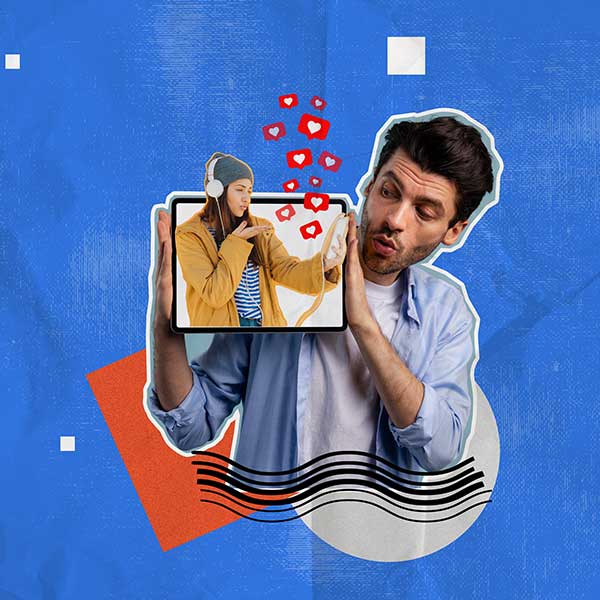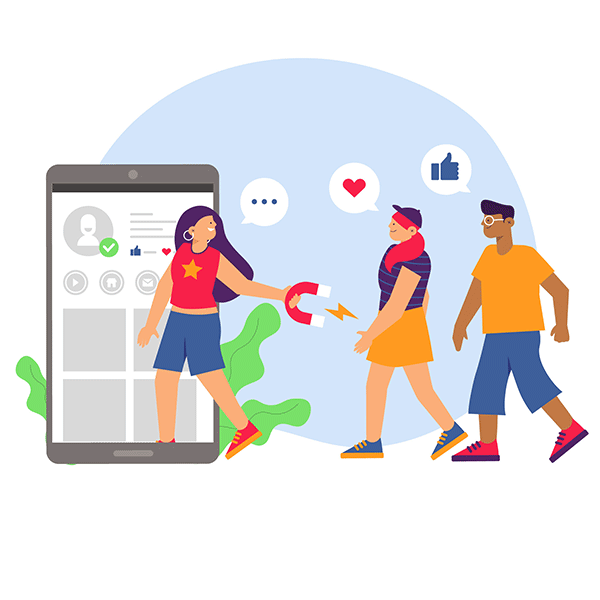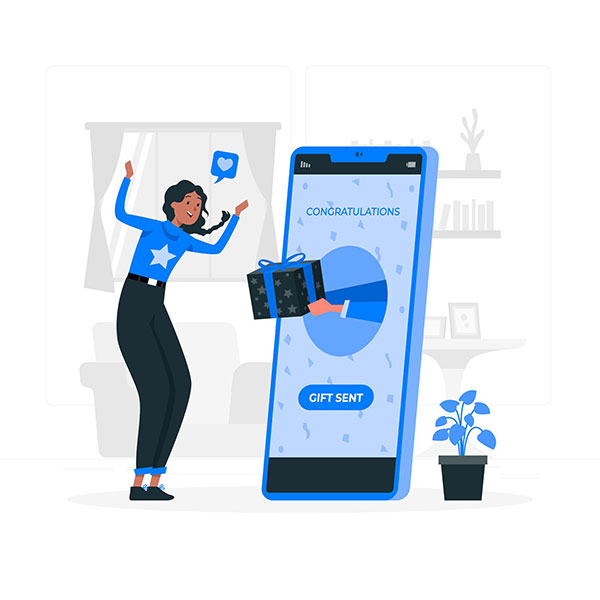
How Do Top Brands Get Their Content to Go Viral? Here’s the Formula.
Ever wondered why some brands seem to make every post go viral while others struggle to gain traction?
What’s the secret formula they’re using? It’s not just luck—there’s a science behind viral content that top brands have mastered.
The truth is, creating content that goes viral is less about chance and more about strategy.
In today’s fast-paced digital world, viral content is like the holy grail for brands when it comes to reaching their goals.
It’s the kind of content that spreads like wildfire, reaches millions of people, and often leads to massive brand exposure.
From the emotional connection to sheer entertainment value, viral content has the power to turn a brand into a household name almost overnight.
But, what does it take for a piece of content to break through the noise of millions of other posts and stand out in front of the right audience?
It’s not just about creating something “cool” or “shareable”—it’s about using the right mix of creativity, strategy, and timing to capture attention.
In this post, we’ll break down the strategies and tactics that the top brands use to create viral content.
Whether it’s tapping into emotions, capitalizing on trends, or mastering the art of social media distribution, there are several key elements that go into making content viral.
By understanding this formula, you can apply these insights to your own content creation process and significantly increase the chances that your content will resonate with audiences, gain massive traction, and ultimately lead to greater brand success.
Ready to learn the secret sauce behind viral content? Let’s dive in!

What Makes Content Go Viral?
Defining Viral Content:
Viral content is more than just a popular post—it’s content that rapidly spreads across the internet, capturing the attention of a wide audience and generating massive engagement.
For content to be considered truly viral, it must reach far beyond its initial audience, snowballing as users share, comment, and engage with it, often to an exponential degree.
The primary indicators of viral content include:
Massive Reach:
Viral content is often shared by thousands, if not millions, of people.It spreads across social media platforms, websites, blogs, and even offline spaces through word of mouth.
What started as a post from a brand or individual can quickly gain traction and reach a massive global audience.
High Engagement:
Engagement is key to determining whether content has gone viral.This includes likes, shares, comments, retweets, and other interactions that reflect how much people are resonating with the content.
When people engage with content—whether by laughing, sharing it with friends, or discussing it online—they are effectively amplifying the message, driving its virality.
Sharing:
At the core of virality is the act of sharing. When content strikes a chord, it’s shared across social platforms, emails, and even in conversations.
People share content they feel connected to or believe will entertain or inform their network. This organic sharing is what allows content to spread far beyond its initial audience.
The unique power of viral content lies in its ability to transcend traditional marketing tactics—it doesn’t require heavy ad spend or a long lead-up time to achieve widespread visibility. Instead, viral content leverages social proof and user participation to snowball and reach massive audiences through organic means.

The Power of Virality for Brands:
When content goes viral, the impact on a brand can be profound, often creating significant business opportunities.
While going viral isn’t always predictable, its potential benefits can be game-changing:
Brand Awareness:
One of the most immediate advantages of viral content is the explosion of brand visibility.
As your content spreads rapidly across various platforms, it can introduce your brand to millions of new people, many of whom may never have encountered it otherwise.
Whether through a funny video, an emotional campaign, or a timely response to a social issue, viral content has the ability to amplify your brand’s presence and significantly expand its reach.
The wider the reach, the more people are introduced to your products, services, and values, which can lead to increased brand recognition.
Increased Sales:
While virality may begin with brand awareness, it often leads to direct sales growth.
When people are exposed to a brand in an engaging and meaningful way, they are more likely to make purchases, share their interest with others, or explore your website.
For example, when a viral campaign is tied to a product launch or a limited-time offer, the resulting attention can drive significant traffic to your site or store and generate higher conversion rates.
A viral post that resonates emotionally or humorously with users can make them more likely to buy what you’re selling, as they feel more connected to your brand.
Viral Campaigns:
Brands that achieve viral success often see a snowball effect where the virality itself becomes part of a larger campaign.
This can result in long-term benefits, such as increased customer loyalty, organic word-of-mouth marketing, and an ongoing relationship with your audience.
For instance, brands like Nike with their “Just Do It” campaign or Dove with the “Real Beauty” campaign tapped into viral moments that not only exploded on social media but also fueled entire advertising and marketing strategies that resonated for years.
Viral campaigns can reshape a brand’s identity, establish emotional connections with consumers, and position the brand as a leader in its space.
Cost-Effectiveness:
Unlike traditional advertising, which often requires substantial budgets to get high reach and engagement, viral content can lead to massive exposure with little to no direct cost.
This is especially valuable for small businesses or startups that may not have large marketing budgets but still want to compete with larger, more established brands.
If a piece of content resonates well with audiences and starts going viral, the return on investment (ROI) can be astronomical compared to the relatively low cost of creation or distribution.
Influence and Authority:
When a brand’s content goes viral, it can position the company as an influencer or authority in its industry.
A viral moment can change how consumers perceive your brand, giving it a sense of credibility and relevance.
This perception can translate into greater trust, loyalty, and customer advocacy. Once your brand becomes associated with virality, people may naturally begin to look to your brand for cutting-edge ideas, trends, or insights, solidifying your position as a thought leader.
~~
In summary, the power of virality lies not just in the sheer number of views or shares, but in the long-lasting impact it can have on a brand.
By achieving viral success, brands can experience rapid growth, enhanced credibility, and an emotional connection with their audience that often translates into increased sales and loyalty.
It’s no surprise that companies and marketers alike are constantly striving to crack the code for viral content. When done right, virality can serve as a launchpad for far-reaching business success.

Create Emotionally Engaging Content
Viral content often elicits strong emotions, such as laughter, surprise, empathy, or even nostalgia.
When content evokes a powerful emotional response, people are more likely to share it with others.
After all, sharing content that makes us feel something is a way of connecting with those around us.
Why It Works:
Content that triggers an emotional reaction tends to be remembered longer and shared more frequently.
Emotions drive behavior, and if your content is tied to a specific feeling, whether joy, sadness, or humor, it becomes much more likely to spread across social networks.
Example:
The Dove “Real Beauty” campaign is an excellent example of emotionally engaging content. It challenged traditional beauty standards and resonated deeply with women worldwide.
The campaign, which included empowering real women (rather than models) to showcase their beauty, was both emotionally compelling and relatable, leading it to go viral across various platforms.

Leverage Trends and Timeliness
Viral content doesn’t live in a vacuum; it thrives in the context of what’s happening right now.
Capitalizing on trends, memes, current events, or hot topics can skyrocket your content’s chances of going viral.
Whether it’s a trending hashtag, a national holiday, or a major cultural event, aligning your content with the current zeitgeist gives it relevance and urgency.
Why It Works:
When content is timely and connected to popular conversations, it taps into the collective consciousness of a large group of people.
It feels relevant and urgent, motivating people to share it with their networks to stay on top of trends.
Example: During major events like the World Cup or the airing of Game of Thrones, brands jumped on the bandwagon by creating content that tied into the excitement.
For instance, Adidas capitalized on the World Cup by creating ads that resonated with soccer fans, while Oreo became famous for their “Dunk in the Dark” tweet during the 2013 Super Bowl blackout.
By reacting quickly to trends, these brands were able to position themselves at the forefront of viral conversations.

Make It Visually Compelling
In a world where attention spans are shrinking, visual appeal is critical.
Content that’s visually striking, whether it’s through high-quality photography, engaging video, or shareable graphics, is more likely to be shared.
People are naturally drawn to images and videos, making them prime candidates for viral content.
Why It Works:
Visual content is easier to digest than text-heavy posts and can communicate emotions, messages, and branding much more quickly and effectively.
Shareable visuals are particularly impactful on platforms like Instagram, TikTok, and Pinterest.
Example: Coca-Cola’s “Share a Coke” campaign is a great example of visually compelling content that went viral.
By personalizing bottles with common names, Coca-Cola created content that was visually enticing and shareable.

Keep It Short and Snackable
In today’s digital age, attention spans are shorter than ever.
People don’t want to sit through long videos or read lengthy articles.
Viral content often thrives when it’s short, easy to consume, and delivers an instant payoff. Whether it’s a quick meme, a 15-second video, or a witty tweet, brevity is key.
Why It Works:
Short, snackable content fits well into people’s busy lives, and it’s more likely to be consumed in its entirety. The quicker and easier your content is to absorb, the higher the chances it will be shared.
Example:
TikTok has made short-form video content wildly popular.
Brands and creators who master the art of crafting 15-60 second videos with impactful visuals and catchy music have seen their content go viral.
Similarly, Twitter posts with witty one-liners or clever hashtags often go viral for their conciseness and humor.

Incorporate Humor or Surprise
Humor is one of the most effective ways to drive engagement and sharing.
People love to share things that make them laugh, and surprise twists in content keep audiences intrigued and excited.
When content surprises or amuses people, they’re more likely to share it with friends and family, creating a ripple effect.
Why It Works:
Humor and surprise disrupt expectations, causing people to engage in ways they wouldn’t with more straightforward content.
A funny or surprising moment encourages people to share the experience, whether it’s a hilarious video, unexpected twist, or witty remark.
Example:
Old Spice’s “The Man Your Man Could Smell Like” campaign became an overnight viral sensation.
The ad combined humor, wit, and absurdity, making it shareable and memorable.
The unpredictable, over-the-top nature of the campaign generated tons of social media buzz, making it a prime example of how humor and surprise can propel virality.

Encourage Engagement and Sharing
Encouraging people to share your content or engage with it directly can be the final piece in the viral puzzle.
Interactive calls to action, hashtags, contests, and user-generated content (UGC) all play a role in motivating your audience to participate in spreading your content.
Why It Works:
When people feel involved in a campaign—whether by using a hashtag, creating their own content, or participating in a contest—they become active promoters of your content.
Engagement is a form of validation, and when people engage, they’re more likely to share with their network.
Example:
The ALS Ice Bucket Challenge is one of the most successful viral campaigns that used user-generated content to spread.
By encouraging people to film themselves dumping ice water over their heads and tagging others to do the same, the challenge created an ongoing cycle of engagement and sharing that became a global phenomenon.
Conclusion
In conclusion, creating viral content is both an art and a science.
It’s about combining the right ingredients—knowing your audience, creating emotional connections, leveraging trends, making content visually compelling, keeping it bite-sized, using humor or surprise, and encouraging engagement.
When these elements come together, they increase the likelihood of content going viral and spreading far beyond your immediate network.
For brands looking to succeed in the digital space, following this formula can significantly enhance their chances of reaching new audiences and achieving viral success.
You can return to the home page to learn more about Fort Myers web design.